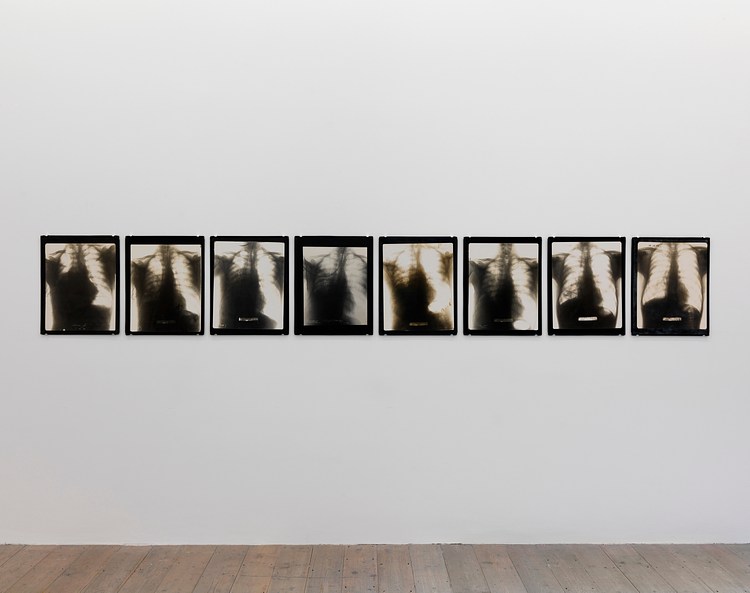
The Individual and the Organisation Artist Placement Group 196679 at Raven Row, London
The Artist Placement Group (APG) was conceived by Barbara Steveni in London in 1965, and established in 1966 as an artist-run organisation seeking to refocus art outside the gallery, predominantly through attaching an artist in a business or governmental context for a period of time.

The Individual and the Organisation Artist Placement Group 196679 ArtReview
artist in residence, Artist Placement Group, geohumanities, impact, John Latham, mid-century Introduction This article explores the outlook and activities of Artist Placement Group (APG), the first organisa-tion to establish artist in residence schemes in the United Kingdom.

Artist Placement Group Frieze
R.E.M. was an American rock band from Athens, Georgia, formed in 1980 by drummer Bill Berry, guitarist Peter Buck, bassist Mike Mills, and lead vocalist Michael Stipe, who were students at the University of Georgia.One of the first alternative rock bands, R.E.M. was noted for Buck's ringing, arpeggiated guitar style; Stipe's distinctive vocal quality, unique stage presence, and obscure lyrics.
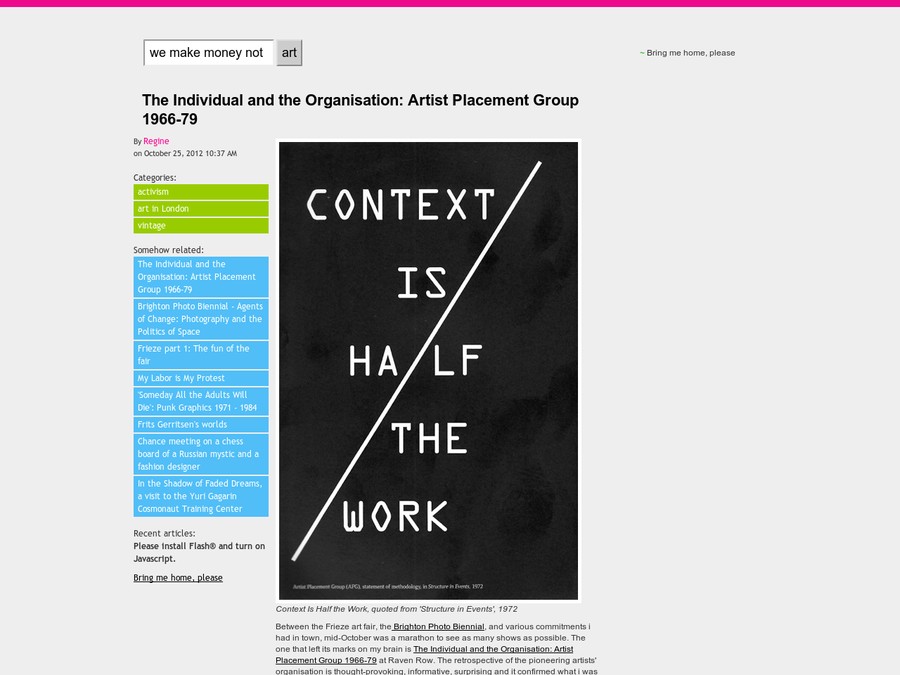
The Individual and the Organisation Artist Placement Group 196679 we make money not art — Are.na
A-Z of People. For nearly two decades, the APG initiated projects that brought together a range of individuals from diverse backgrounds. Barbara Steveni, founder and director of the APG, has compiled a list of everyone who contributed to the organisation's activities. She has provided a brief description of the various positions these people.

Context is Half the Work
This essay offers an analysis of three art projects from the 1960s—the Situationist International, Artist Placement Group, and Art Workers' Coalition—that all tried to mobilize avant-garde art as a political tool to address social issues and bring about social transformation. The Situationists tried to leave behind the art world and turned toward ultraleft politics.
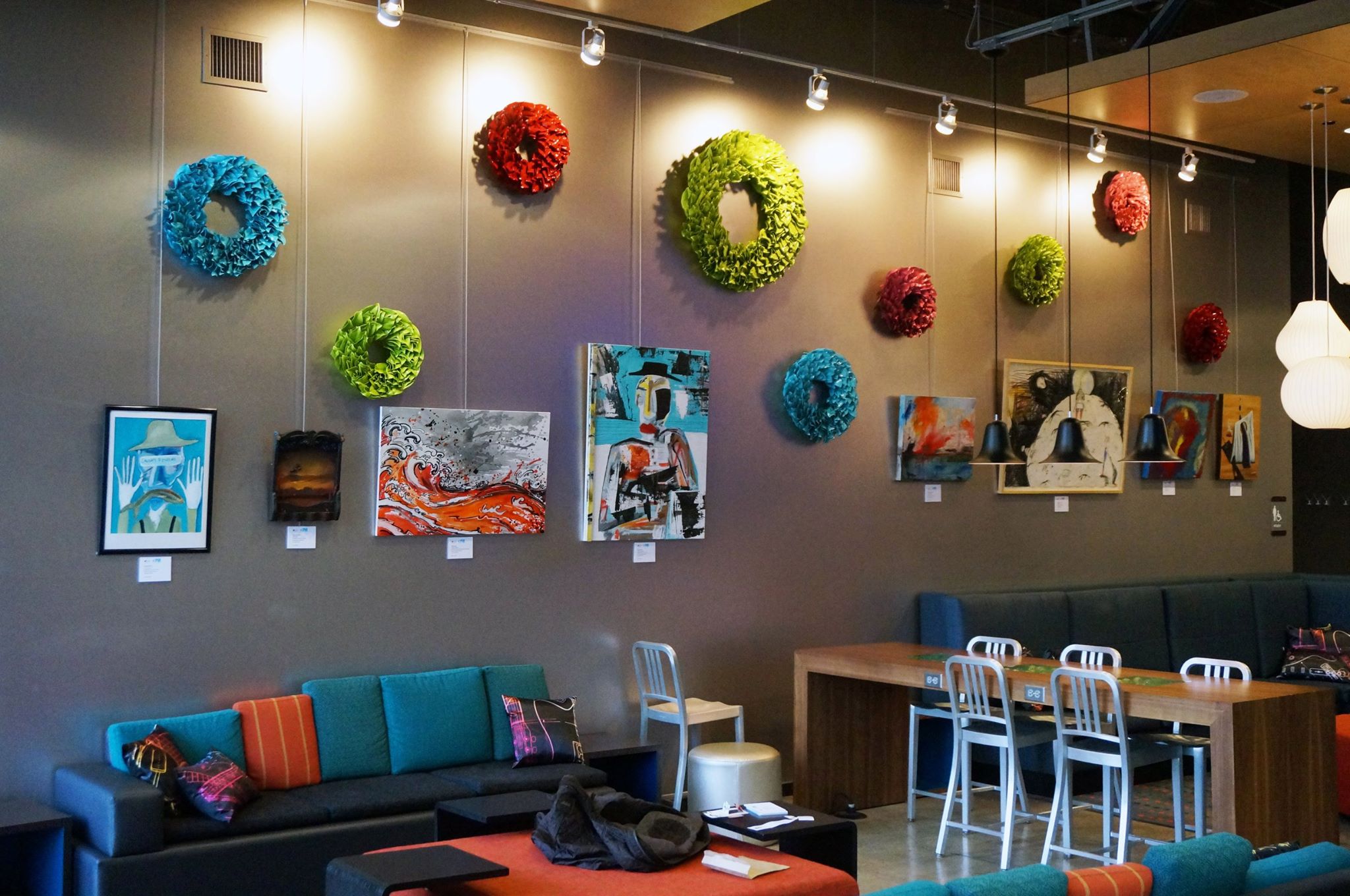
Art Placement Detroit Artists Market
Tate glossary definition for Artist Placement Group: Group founded in 1966 with the aim of placing artists in government, commercial and industrial organisations

Voices of art Barbara Steveni on how the idea for the Artist Placement Group began The
When the Artist Placement Group (APG) was founded in London in 1966, by Barbara Steveni in collaboration with her then partner John Latham, it wasn't the question of labour's immateriality, but Conceptualism's radical critique of the materiality of the art object that framed their experimental investigation into the potential for new relationshi.

Contemporary Art Daily » Blog Archive » Artist Placement Group at Raven Row
Latham, John. 'APG since 1965,' Control. 1970 Overy, Paul. Artists in the works, London, APG film, duration 30 minutes. Lucie-Smith, Edward. 'Artists in steel towers,' Studio International, April, no. 910. 'Inno 70', Studio International, November, no. 927. Sheperd, Michael. 'Simply Done', The Sunday Telegraph, 12 December. 1971

Artist Placement Group at Raven Row (Contemporary Art Daily)
The Artist Placement Group (APG) emerged in London in the 1960s in order to go where no artist had gone before. The APG pioneered the concept of art in the social context and sought to address the marginalization of artists by taking them into corporations and organizations. The APG would negotiate to place artists within industry and British.

Pin on AlleyOop
Also known as "Art & Economics," "Inno₇0" was intended to showcase the achievements of an entity called the Artist Placement Group, whose mission was to arrange artists' residencies at corporations and government agencies.¹ Confusing to many observers in its day, APG appears a peculiar organization even from a contemporary standpoint.

Artist Placement Group at Raven Row (Contemporary Art Daily)
The interior design program leading to the Bachelor of Fine Arts, Interior Design, in the Lamar Dodd School of Art, is accredited by the Council for Interior Design Accreditation, www.accredit-id.org, 206 Grandville Avenue, Suite 350, Grand Rapids, MI, 49503 . The CIDA-accredited program prepares students for entry-level interior design.
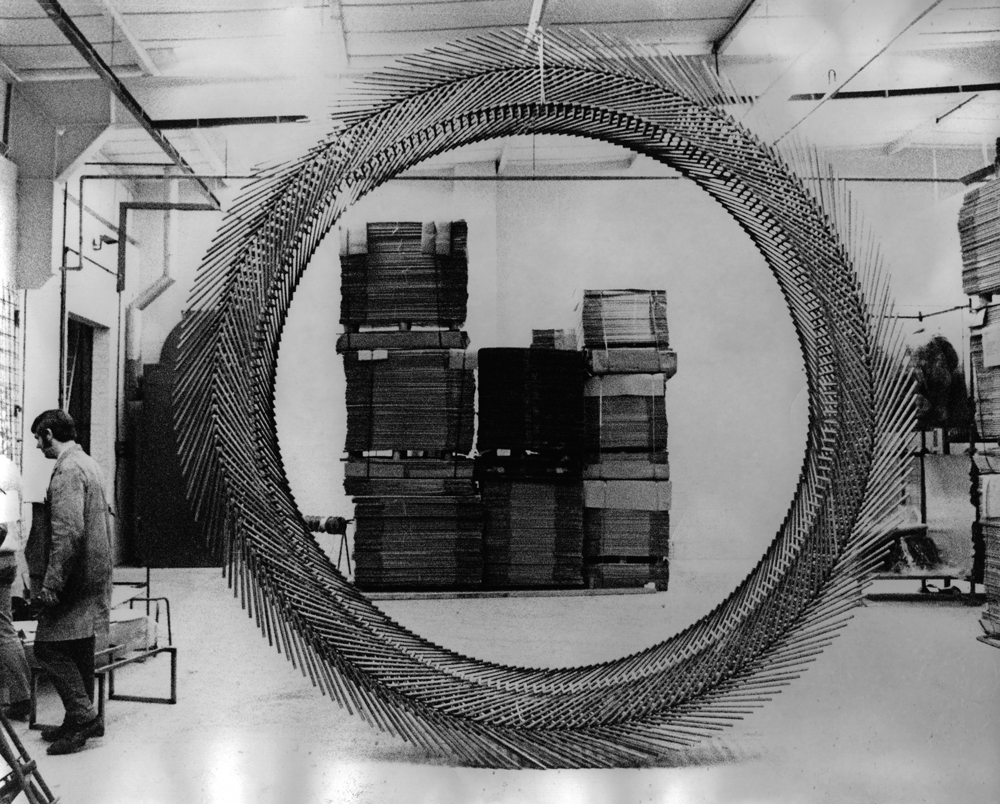
Making work into an artform Little AtomsArtist Placemennt Group
We also hear a lot about a group of 1960s conceptualists called the Artist Placement Group, who brokered some of the earliest artists' residencies in industry and government in the UK. In 1966, when APG was founded, the art world regarded 'tangling with the dirt' of commerce and the public sector as an anomaly, even an aberration within art.

Contemporary Art Daily » Blog Archive » Artist Placement Group at Raven Row
ATHENS, GA.- Even before the Georgia Museum of Art at the University of Georgia decided to close to the public, its staff was hard at work planning how to move its activities online. The museum is a much-used public space as well as a teaching and research institution, and its staff and docents serve tens of thousands of visitors a year with tours and programs.
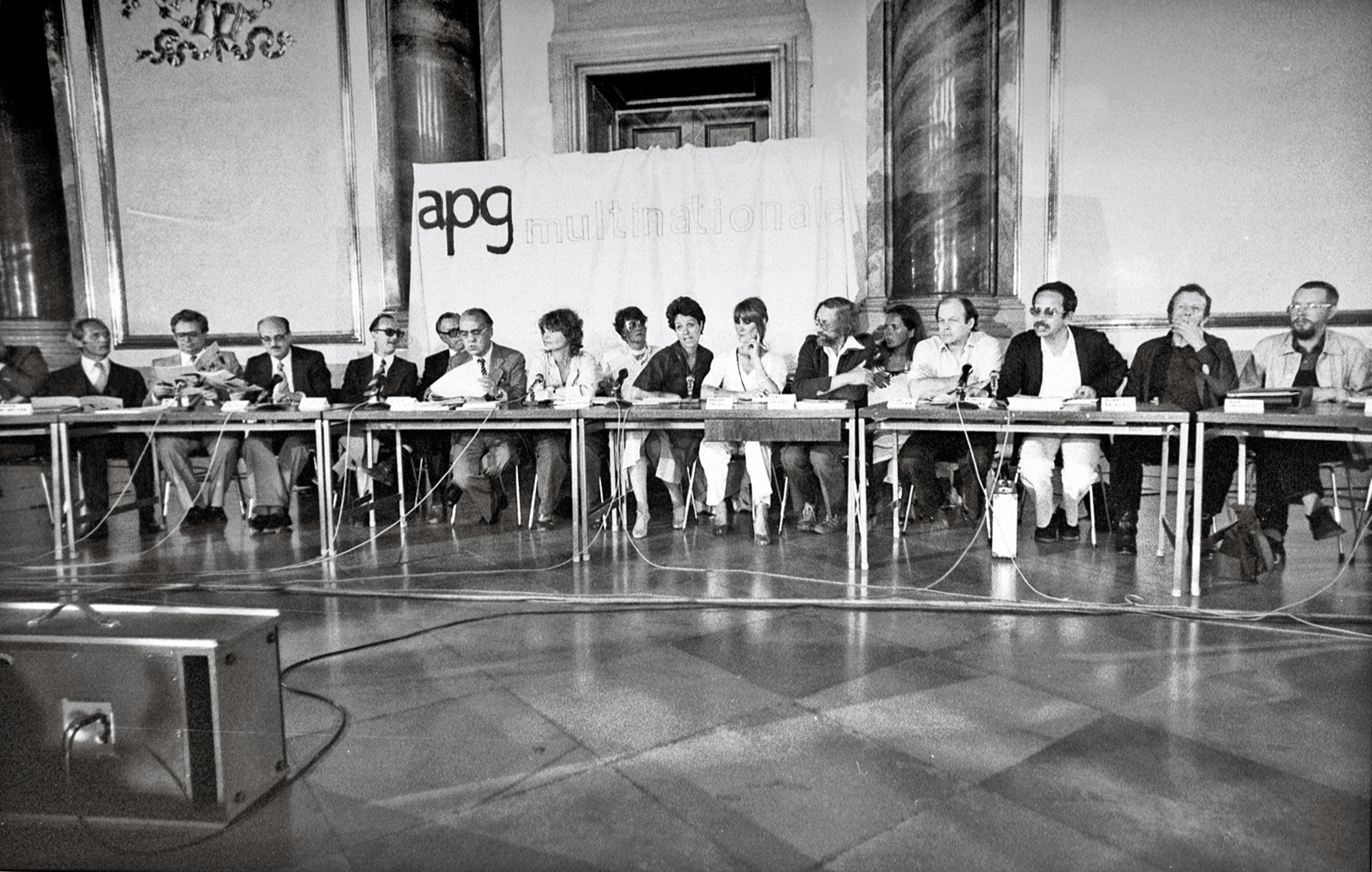
Context is Half the Work
The Artist Placement Group (APG) emerged in London in the 1960s. The organisation actively sought to reposition the role of the artist within a wider social context, including government and commerce, while at the same time playing an important part in the history of conceptual art during the 1960s and 1970s.

Artist Placement with Student Services, Uni of Brighton Molly Maher
The Artist Placement Group: an archaeology of impact S. Rycroft Published in Cultural Geographies 1 January 2019 History, Art Mid-20th century experiments in aesthetics underpin the establishment of the first artist-in-residence schemes which were established by the Artist Placement Group from 1966.

Artist Placement Group at Raven Row (Contemporary Art Daily) Contemporary art daily
The Artist Placement Group (APG) was conceived by Barbara Steveni in London in 1965, [1] and established in 1966 as an artist-run organisation seeking to refocus art outside the gallery, predominantly through attaching an artist in a business or governmental context for a period of time.